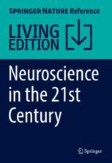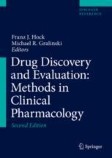Search
Search Results
-
Opioids and Opiates: Pharmacology, Abuse, and Addiction
This chapter presents an overview of the opioid system consisting of a wide variety of endogenous and exogenous ligands, as well as several receptor...
-
Kappa Opioid Agonist-Induced Diuresis: Characteristics, Mechanisms, and Beyond
Activation of the kappa opioid receptor (KOR) induces antinociception, anti-pruritic activity, diuresis, sedation, and dysphoria. KOR agonist-induced...
-
Opioids and Opiates: Pharmacology, Abuse, and Addiction
This chapter presents an overview of the opioid system consisting of a wide variety of endogenous and exogenous ligands, as well as several receptor...
-
Opioid Receptors and Neuronal Signal Transduction
This chapter provides information on the classification, structure, and properties of the main opioidOpioids receptor subtypes, their canonical and...
-
Kappa Opioid Receptor Ligands and Pharmacology: Diphenethylamines, a Class of Structurally Distinct, Selective Kappa Opioid Ligands
The kappa opioid receptor (KOR), a G protein-coupled receptor, and its endogenous ligands, the dynorphins, are prominent members of the opioid...
-
Preference for Palatable Food, Impulsivity, and Relation to Drug Addiction in Rats
Overall, this review focuses mainly on the behavioral overlap and interaction between drug abuse and excessive behavior directed toward natural...
-
Kappa Opioid Receptor Expression and Function in Cells of the Immune System
The kappa opioid receptor (KOR) is expressed on a number of hematopoietic cell populations, based on both protein binding analysis and the detection...
-
Screening Methods for the Evaluation of Analgesics, Anti-Inflammatory Drugs, and Antipyretics
Several drugs and agents in clinical practice have been found to possess mild to moderate analgesic, anti-inflammatory and antipyretic activity. This...
-
Determination of structural factors affecting binding to mu, kappa and delta opioid receptors
Addiction is a complex behavioral phenomenon in which naturally occurring or synthetic chemicals modulate the response of the reward system through...

-
The Rise and Fall of Kappa-Opioid Receptors in Drug Abuse Research
Substance use disorders represent a global public health issue. This mental health disorder is hypothesized to result from neurobiological changes as...
-
Preclinical Studies on Nalfurafine (TRK-820), a Clinically Used KOR Agonist
Nalfurafine has been used clinically in Japan for treatment of itch in kidney dialysis patients and in patients with chronic liver diseases. A...
-
Pleiotropic Effects of Kappa Opioid Receptor-Related Ligands in Non-human Primates
The kappa opioid receptor (KOR)-related ligands have been demonstrated in preclinical studies for several therapeutic potentials. This chapter...
-
Antipruritic Effects of Kappa Opioid Receptor Agonists: Evidence from Rodents to Humans
Centrally administered bombesin induces scratching and grooming in rats. These behaviors were blocked by early benzomorphan kappa opioid receptor...
-
The Role of Dynorphin and the Kappa Opioid Receptor in Schizophrenia and Major Depressive Disorder: A Translational Approach
The kappa opioid receptor (KOR) and its endogenous ligands dynorphins (DYN) have been implicated in the development or symptomatology of a variety of...
-
Interactive Mechanisms of Supraspinal Sites of Opioid Analgesic Action: A Festschrift to Dr. Gavril W. Pasternak
Almost a half century of research has elaborated the discoveries of the central mechanisms governing the analgesic responses of opiates, including...

-
Pharmacodynamic Evaluation: Ocular Pharmacology
The eye is a specialized organ that provides a relatively easy access for direct visualization of the different anatomical structures and assessment...
-
Pharmacodynamic Evaluation: Ocular Pharmacology
The eye is a specialized organ that provides a relatively easy access for direct visualization of the different anatomical structures and assessment...
-
Opioids as Triggers of the Adaptive Phenomenon of Ischemic Preconditioning of the Heart
Transient ischemia/reperfusion has been shown to evoke increases in enkephalin levels in myocardial tissue. Blockade of δ opioid receptors eliminates...
-
Effects of Activation of κ-Opioid Receptors on Behavior during Postnatal Formation of the Stress Reactivity Systems
Stress at any age, including at the early stages of postnatal development, leads to changes in the state and reactivity of the stress-related humoral...
-
Central Analgesic Activity
Many diseases have pain as a classical symptom requiring treatment with analgesics. Primary cancer and secondary metastases can lead to severe pain,...
